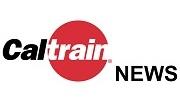Caltrain’s Board of Directors voted to adopt a long term 2040 Service Vision today, defining an ambitious plan for growing service over the next 20-plus years. The Caltrain Business Plan’s 2040 Service Vision sets a target for the railroad that ensures Caltrain can continue to meet the growing mobility needs of the region while making the best use of the many projects and investments planned and under construction along the corridor.
Under the 2040 Service Vision, Caltrain service would evolve to look very different from what the railroad operates today. Caltrain currently operates five trains per hour during peak commute times, and over the last 15 years, ridership has more than doubled to nearly 65,000 daily riders. The 2040 Service Vision calls for fast and frequent service to be the standard on the line every day, all day. Service during peak hours would grow to a minimum of eight trains per direction per hour, with all day express service every 15 minutes, and increased off-peak and weekend services. The vision would also expand the corridor’s capacity by an additional four trains per hour in each direction to connect Peninsula communities with statewide high-speed rail service. The vision also includes end-to-end, electrified service from Gilroy to the Salesforce Transit Center in San Francisco, with four trains per hour, per direction between Blossom Hill and Tamien Stations; and two trains per hour, per direction between Gilroy and Blossom Hill Stations.
By 2040, this increased service, frequency, and longer trains, would allow ridership to almost triple to 180,000 daily riders. Ridership growth of this magnitude would eliminate 825,000 car trips and 110 metric tons of carbon emissions every day, and would put an estimated 5.5 lanes worth of commuter traffic onto Caltrain instead of the region’s highways.
Caltrain’s 2040 Service Vision also prepares the railroad to expand and integrate into a regional rail network that includes the planned extension to the Salesforce Transit Center in Downtown San Francisco, integration with a potential renewed rail service across the Dumbarton Bridge and the rebuilding of Diridon Station in San Jose. In additional to preparing Caltrain for a future shared corridor with high speed rail, the vision also acknowledges that a number of adjacent and connecting systems are engaged in long term planning of their own. In recognition of opportunities presented by a second Transbay crossing, expanded service to Monterey County, and the potential growth of Altamont Corridor Express and Capital Corridor services, the vision also includes a commitment to work with the region to better define and be prepared for even higher levels of service on the corridor, and to work with the Board to periodically reaffirm the vision as needed.
Caltrain intends to accomplish these goals through incremental development of corridor projects and infrastructure, including an improved signal system, station modifications such as platform lengthening and level boarding, improved maintenance and storage facilities, and a series of short, 4-track stations that allow express trains to overtake locals.
The 2040 Service Vision is possible thanks to Caltrain’s ongoing work to transition the service from diesel operations to high-performance electric trains. In 2017, Caltrain secured full funding to complete the electrification of the Caltrain corridor. Electrification is under way and will be complete by 2022.
For more information, visit https://www.caltrain2040.org/.
###
About Caltrain: Owned and operated by the Peninsula Corridor Joint Powers Board, Caltrain provides commuter rail service from San Francisco to San Jose, with limited commute service to Gilroy. While the Joint Powers Board assumed operating responsibilities for the service in 1992, the railroad celebrated 150 years of continuous passenger service in 2014. Planning for the next 150 years of Peninsula rail service, Caltrain is on pace to electrify the corridor, reduce diesel emissions by 97 percent by 2040 and add more service to more stations.
Like us on Facebook at www.facebook.com/caltrain and follow on Twitter @Caltrain.
Free translation assistance is available.
Para traducción llama al 1.800.660.4287; 如需翻譯,請電 1.800.660.4287.
